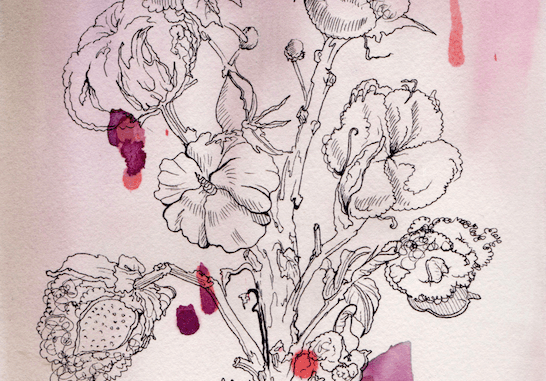
At SUNY New Paltz, graphic design students develop their skills under a tough and thorough curriculum. After trudging through classes like Data Visualization, Web II and an advanced, two-semester thesis program, it’s important for them to see the light at the end of the tunnel.
On Wednesday, Oct. 30, graphic design alumni were invited to the SUNY New Paltz Honors Center in order to be that light. While sitting on a panel discussion with an audience of undergraduate designers, they answered common questions and demonstrated to students that a creative career can await them after college.
Featured alumni were Sara DeLessio, Rob Monstransky, Drew Joseph, Yuan Chen, Tim Brown and Nicolette Seeback. They discussed what studying graphic design at New Paltz taught them, how they’ve progressed through their fields, and how their design methodology has changed since graduation. In class and in the professional world, there are stark differences in the design process from conception to release.
“I’m learning how to not be so precious about everything,” Seeback said.
In the business sphere, designers often work with the client’s ideals in mind, and have to put their own preferences aside.
Most of all, the speakers regretted being so anxious about their futures while in the program, or wished they had taken more time to enjoy the college experience instead of stressing over their theses.
Despite their calls to stress less, their paths to success did not come without forks in the road.
Among the featured guests, Sara Delessio’s career path was particularly interesting. In between graduation and her current career, DeLessio worked a job completely unrelated to her field while doing design work freelance. Despite this detour, she eventually found her way to a data visualization position.
DeLessio is driven by her love of biology and natural sciences, and she reflects this in her design and illustration work. At the panel event, her love for plant and animal subjects was even evident from her attire: a blouse with a giraffe print pattern print.
“I grew up in the Hudson Valley, so my love of nature is heavily inspired by the local landscapes,” DeLessio said, who now works in the equally beautiful city of Ithaca. “I am grateful to have moved from one beautiful area to another, although there is a unique quality that the Hudson Valley has that I continue to miss and feel inspired by.”
Perhaps SUNY New Paltz’s mountain vistas provided DeLessio with the inspiration she needed while studying biology, fine art and graphic design. Graphic design is an inherently unnatural practice, using computer programs as opposed to more traditional tools, so the fact that DeLessio can convey such texture and color in her work—and has not strayed from her illustration style—is beautiful.
“To be honest, there are times when I am still not sure what makes fine art different from design,” DeLessio said. “Both fields communicate ideas through visual storytelling and neither are restricted to figurative or abstract styles.”
She supposes the thing that makes her a designer rather than a fine artist is the fact that she works with clients and uses their ideas as starting points, rather than her own. Starting with scientists’ research as her North Star, DeLessio uses her skills to communicate ideas in a way that an audience will be able to interpret, enjoy viewing and remember.
After the panel discussion, all returning alumni were whisked down the hallway into a portfolio review session, where they provided feedback to current graphic design undergraduates, and suggested ways in which they could improve their work.
Second-year student Kirstin Phillips was grateful to have an opportunity for critique. “It was really beneficial—it’s one thing to be critiqued by peers, but it’s something else to have someone with a trained eye who is in your dream career field,” Phillips said. “I spoke to Tim Brown and his attention to detail was crazy…it was cool to step back from my personal connection from my portfolio and see his perspective on it.”
This meeting of the minds created a sense of unity between different generations of New Paltz students.
“I feel like keeping other people close is important,” said alumnus Rob Monstransky. “It becomes therapeutic because you guys all go through the same thing—and who knows if there are opportunities down the line… it’s always good to have those connections.”
Design student Luke Barnell mirrored this sentiment and noted that the most encouraging part of the event was hearing from professional designers who had been in his position before.
“It’s just reassuring to know that other people have been where I am now, and have gone on to do tons of amazing stuff,” Barnell said.

